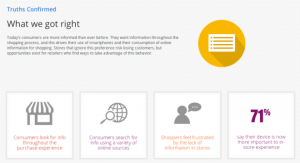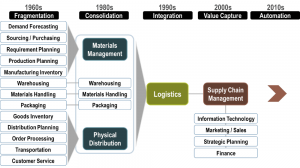— March 9, 2018

geralt / Pixabay
Small businesses must have a creative content plan that focuses on dominating local search engine optimization searches. Too often, small business owners do not use the available methods for drawing in local consumers to their brick and mortar businesses. Their content plan may be too general or not focused on their local target audience. To remedy this, content developers responsible for small businesses must review their content and optimize it for their local markets.
Capture the Local Market Through SEO
If you own a small business, you already know the importance of having a strong online presence, so we’ll get right down to it. Just make sure that your business site is also optimized for mobile browsers.
Set Up Your Google My Business Page
When people are looking for a local business, Google is the first place they typically check. To makes sure your business shows up at the top of the Google search, claim your Google Business Page.
To do this, visit Google.com\business. Click “Get on Google” and sign in to your Google account. Enter your business address in the search box. Your business should pop up, but if it does not, click on “Add Your Business.” Either option chosen will require a two- to three-week wait for a postcard to arrive through snail mail.
After receiving your postcard, you will verify your business and add information, almost like a social media page. You will now be able to add business hours, photos, phone numbers, and a link to your website. Another great aspect of claiming your business is being able to receive and respond to reviews, which is a wonderful tool for customer engagement.
Here are some additional tips for your Google My Business page:
- Don’t skip the description section. Write a long, detailed, catchy description of products or services your company offers.
- Choose the correct categories for your business, so a general search for “plumbers near me” will reveal your business.
- Upload as many business photos as you can. Be sure your business is neither too empty nor too busy when you photograph it. It should appear to be popular, but not so busy that it turns people off.
- Ask loyal customers to post honest reviews of your business on Google.
Blog About Local Events and News
One specific method for optimizing local SEO traffic is to blog about local events and news. Write about topics that locals will be searching for. The annual Renaissance Fair is approaching? Take time out of your day to write about the subject and how enjoyable the event has been in past years. If possible, your business can also attend these events and then invite your audience to join you.
Write about local events on social media sites. This can be accomplished by asking followers if they plan to attend local events or asking their opinions of local news pieces. This can be a great method for fostering customer engagement, so be sure to take an active role in the discussions.
Add Local Area Meta Descriptions
Writing an effective meta description means understanding what your clients’ needs will be when searching for your business. Google recently changed its meta description length from 160 to 320 characters. This doesn’t necessarily mean that your business should use all 320 characters but be sure to use the space wisely by including local phrases.
Writing a good meta description involves including three specific pieces of information:
- Your customer’s problem
- Your business’s solution
- The outcome of your service
To optimize these steps for your area, include geographically specific terms.
“Q & A plumbing has been serving the South Beach area for 40 years. We specialize in clogged drains, leak repair, garbage disposal installation, and water heater repair for Miami, Coral Gables, Fontainebleau, and Hialeah. Call us now to fix all of your plumbing problems.”
Meta descriptions do not directly affect your website ranking in Google, but they will affect the relevancy of your website for certain keywords consumers might use. Now is a good time to review your meta description to see how it can be better focused for your local market. The addition of character spaces may be beneficial if you need the room.
Encourage Customers to Leave Reviews
One survey found that 97% of consumers read online reviews for local businesses. With a statistic that high, it’s crucial that you develop a strong review system for your business. Small businesses must take an active role in soliciting reviews for their businesses. Google, Yelp, Angie’s List, and Facebook are all important platforms for garnering reviews.
Encourage your customers to leave reviews; do not leave it to chance. By nature, people are more apt to leave a negative review than to take the time to leave a positive one after their experience. One grumpy customer will take the initiative to write a one-star review, while 10 delighted customers may not take the time to input their five-star reviews. To remedy this, always encourage customers to leave reviews for your business. Many people don’t even think about going online to review a business, but a friendly reminder can be helpful, especially if the consumer was happy with the experience.
Do not offer incentives for leaving reviews. This practice is illegal in accordance with Federal Trade Commission rules. Offering an incentive is seen as a form of compensation that can lead to deceptive representation in reviews, so don’t do it! Also, be sure that you take the time to respond to reviews, whether good or bad. Bad reviews can be mitigated by responding professionally and offering to make their experience better the next time, along with a possible discount.
Network with Other Local Businesses
Small businesses should take time to network with other business owners and local nonprofit organizations. On social media platforms, you can follow other local companies and comment on their posts. Adding to their discussions can help your business reach local audiences that it might not otherwise on its own sites.
Build relationships with local businesses and stir up your site content by welcoming local guest bloggers. Invite business owners to write for your site and link it to your social media sites. You can also make mention of local businesses on your own site, so long as they are not competitors. For example, if you run an RV company, you could easily create a partnership with local campgrounds to expand your target audience.
Successfully Manage Local SEO Content
Dominating your local SEO content can be accomplished with a little extra work. Think of yourself as a consumer and translate that outlook to help with SEO optimization. Decide what consumers specific to your locale will be searching for and include it on your site, meta description, and social media accounts. Optimizing your content will attract more customers and bring in more revenue, all with a little effort.
Digital & Social Articles on Business 2 Community
(43)






